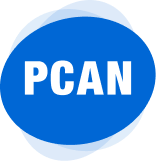Construction of two HyperHub sites
Andrew Leadbetter, Transport Project Manager – EV Strategy at City of York Council provides an insight into the two new HyperHub sites which are due to be available to the public in 2021.
What are the two HyperHub sites?
They are the region’s largest EV charging hubs. The two sites, next to Monks Cross and Poppleton Bar Park and Ride facilities, are a City of York Council £2.2m investment to develop the sites into high quality, high speed electric vehicle charging hubs.
Each HyperHub site will consist of solar PV canopies which will generate green electricity (100kWp), battery energy storage (348kW / 507kWh), 4 Rapid and 4 Ultra Rapid electric vehicle chargers. The chargers will help the region to support the next generation of electric vehicles which have significantly larger battery capacities and are capable of Ultra Rapid charging.
Construction on both sites is due to start in January 2021, and will be led by EvoEnergy - who are proud to have been awarded the contract. The new site at Monks Cross is due to be available to the public in March 2021, whilst Poppleton is scheduled for completion in June 2021.
Why are you doing this work?
The development of this system will encourage private car owners, taxi drivers and business users to make use of the new facilities, therefore, improving the city’s overall carbon emissions. With associated air quality and climate change benefits, this will meet the needs of the next generation of plug-in vehicles.
How are the HyperHubs being paid for?
The council has successfully secured £1million of European Regional Development Funding and £800,000 from the Office for Low Emission Vehicles, along with £400,000 of the Council’s own capital funding to install the first two HyperHubs. This comes just at a time when the nation prepares to transition across to using electric vehicles with the announcement of a complete ban on sales of new petrol or diesel cars by 2030, with plug-in hybrid sales to end in 2035.
Funding largely covers the cost of building the two HyperHub sites, meaning that the Council will be able to maintain a lower tariff than commercial operators can offer.
Why Is the City Of York Council Investing In HyperHubs?
When the council first developed their EV charging network in 2013, there were far fewer plug-in vehicles on the road. However, over the past few years, electric vehicle technology has progressed massively and these vehicles have now become a viable option for many everyday road users.
City of York Council is a pioneer in the use of innovative green technology. Over recent years, the council has lead the way in providing a range of public charging facilities for electric vehicles to help reduce carbon emissions. Local air quality improvements are also possible, thanks to EV’s eliminating nitrogen oxides (NOx) emissions at the point of use. In addition to generating low carbon electricity on site through PV arrays, all of the electricity supplied from the national grid will be generated by renewable sources providing users with low carbon electricity and ensuring that no NOx emissions are emitted from electricity generation.
What wider work are you doing to create a future proofed public electric network?
We were one of the first cities to introduce a public electric network several years ago which has become really popular. In 2014, there were 1,510 charging sessions, by 2018 that had increased to 13,695.
The HyperHubs project works alongside our Electric Vehicle Charging Strategy, which will provide a high quality charging network that meets the needs of residents, fleets, through traffic and commuters. To guarantee the best result for residents, we plan to continue to own our charging network. This allows us to plan how the network will grow, set tariffs, makes us directly accountable and enables us to deliver next generation chargers as quickly as possible.
Note: This is one strand of City of York’s work on integrated travel.
Image of HyperHub is an artist's impression.





